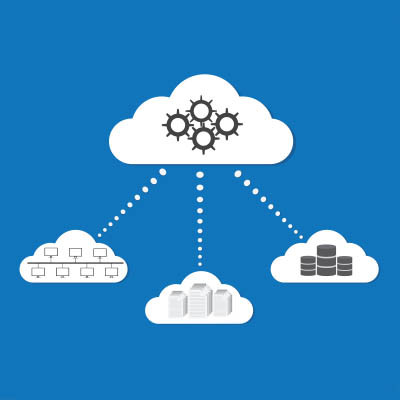MicroLogix Network Services, LLC Blog
For all its benefits, remote work has certainly created some challenges. One major issue is the lack of visibility you have over your employees and the ramifications that could result.
While it is critical to cultivate trust in and with your employees, you also need tools to monitor progress and hold your team members accountable. Let’s talk about some of the issues you may discover once we give you the visibility you need.
We all want to be more productive, but actually being more productive is harder than it sounds. Thankfully, you can make being productive easier than ever by implementing proven frameworks to drive success. Today, we’ll highlight three different frameworks: the Eisenhower Matrix, Eat the Frog, and the Two-Minute Rule.
Your email inbox is one of your most accessed business resources, which means that it cannot get clogged up with useless messages that have little to no value, i.e., spam. If you want to make the most out of your workday, that means mastering your inbox and getting it under control. Today, we have three great tips to help you do just that.
Your IT project manager is the centerpiece at the proverbial table of project implementation. Without one, your project will be much more likely to fail, or at least more likely to get done incorrectly or inefficiently. Today, we want to break down some of the qualities that make for a great project manager and how you can find the right one for your business.
Inefficiency is a common and frustrating problem for many businesses, but it doesn't have to be. Modern technology offers powerful solutions to help you identify and eliminate these productivity problems. By finding the right technology, you can transform how your business operates and achieve a higher level of performance. Here are four effective ways to use technology to find and fix inefficiencies within your organization.
How often do you find yourself overwhelmed by the sheer amount of clutter on your desktop? You might dig through a pile of applications, windows, files, and so much more, and it can be difficult to make sense of it all and be productive. Thankfully, there is a rather simple tool to help you clean up your desktop and focus on one window at a time.
We can probably all agree that there’s a big difference between “staying busy” and “looking busy,” and that the first option is generally the better one in the workplace. The big difference is how productive you actually are.
Let’s go over some simple-to-implement ways you can help your team boost their productivity without even thinking about it.
Artificial Intelligence (AI) is everywhere these days. It has become a standard feature in many business tools and devices. This means a lot of people are using it day-in and day-out. The question becomes: Is it truly beneficial, or does it create more headaches than it solves? Let's explore how AI can actually help your business.
Many businesses are under the impression that their IT, despite being a necessary cost, is just that: a bottomless pit for the company’s hard-earned money. However, this impression could be a sign that the business is not utilizing its technology effectively. Let’s look at three signs that your organization might need to reconsider its relationship with IT spending and how they contribute to your company’s overall impressions of IT (as well as its productivity).
When it comes to being productive, most people think of time management tools or multitasking strategies. One of the most overlooked factors in productivity is simply feeling good. That means physically, mentally, and emotionally. On days when your mood is high and your energy is up, work tends to feel easier and more manageable. That’s no coincidence. Productive individuals understand that how you feel directly impacts how you perform.
Multitasking might commonly be seen as a super skill that all employees and business professionals should master, but is it really all it’s cracked up to be? The truth of the matter is that multitasking doesn’t work, even if it looks like it does. In fact, all it succeeds in doing is making you work slower while increasing your stress and decreasing productivity.
Running a small business is no easy feat, especially when it comes to managing supply chains. You’ve got to keep track of suppliers, shipments, inventory, and customer demands—all while keeping your sanity. Luckily, technology is here to help. Let's break down some of the key tech tools that small businesses are using to make their supply chains smoother and more efficient.
Decisive decision-making is a business staple. Without it, nothing would get done. Picking and choosing what to stay flexible about is one of the biggest question marks you can have when running a business. One aspect of your business that you always need some wiggle room in is your IT. This month, we take a look at what technology you should prioritize flexibility in and how to achieve that goal.
All of your workers depend on the success of your business. A lot of times, however, it doesn’t always seem to managers that they understand that concept. They probably aren’t just slacking off, they probably are a little burned out. Deloitte estimates that approximately 8 out of 10 wage workers show some signs of burnout. Since any lack of productivity is wasted money, you need to do what you can to ensure your employees have the resources they need to overcome burnout.
Every organization relies on its IT to be available when needed. Some businesses can’t function at all without them. However, if a business isn’t keeping up with the management and maintenance of its IT, it can lead to downtime. Today, we’ll explore proactive IT maintenance strategies and how they help businesses minimize downtime in various ways.




















